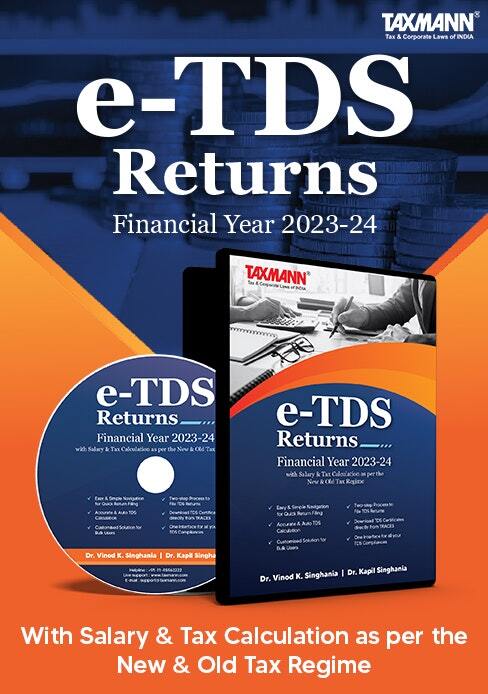

Progressive rate of taxation of income is in vogue on the principle that a person with higher income can afford to pay income-tax at a higher rate in contrast to another person with lesser income who may be subjected to lower rate of tax. Of course, there is some basic exemption limit in income-tax law to provide relief to persons having income less than the prescribed threshold limit. Contrary to this, GST is a consumption tax in respect of which the tax rate is the same for all in respect of a commodity or service without looking into the background of the person buying such commodity or availing service. However, based on the nature of commodity or service, the tax rate is fixed by putting higher rate in respect of luxury goods.
Income-tax law not only provides the regular rate of tax applicable on the income liable to tax but also has penal provisions for not admitting correct income. The legislature thought that every income not admitted by the assessee but found by the tax administration need not necessarily be liable for penalty and a mid-path was thought out by prescribing a higher rate of income-tax in respect of such income so detected with minimal penalty attached to it.
This refresher discusses the decision in the case of Veer Enterprises v. Dy. CIT [2024] 158 taxmann.com 655 (Chandigarh-Trib) and legal precedents in respect of income found in survey under section 133A, whether would be subjected to tax under section 115BBE.
Section 115BBE was inserted by the Finance Act, 2012 applicable from the assessment year 2013-14 onwards. In the ‘Memorandum Explaining the Provisions’ it was covered under the heading “Measures to prevent generation and circulation of unaccounted money” and its rationale was explained as under:
“Under the existing provisions of the Income-tax Act, certain unexplained amounts are deemed as income under section 68, section 69, section 69A, section 69B, section 69C and section 69D of the Act and are subjected to tax as per the tax rate applicable to the assessee. In case of individuals, HUF, etc., no tax is levied up to the basic exemption limit. Therefore, in these cases, no tax can be levied on these deemed incomes if the amount of such deemed income is less than the amount of basic exemption limit and even if it is higher, it is levied at the lower slab rate.
In order to curb the practice of laundering of unaccounted money by taking advantage of basic exemption limit, it is proposed to tax under the unexplained credits, money, investment, expenditure etc., which has been deemed as income under section 68, section 69, section 69A, section 69B, section 69C or section 69D, at the rate of 30% (plus surcharge and cess as applicable). It is also proposed to provide that no deduction in respect of any expenditure or allowance shall be allowed to the assessee under any provision of the Act in computing deemed income under the said sections”.
The Finance Act, 2016 amended section 115BBE(2) to deny the benefit of set off of any loss against the income liable to tax under section 115BBE and it is applicable from the assessment year 2017-18 onwards.
The Taxation Laws (Second Amendment) Act, 2016 substituted section 115BBE w.e.f. 01.04.2017 and enhanced the rate of income-tax to 60%. Currently, with surcharge @25% and HEC @4% the effective rate of tax is 78%.
In Veer Enterprises (supra) the assessee was subjected to a survey under section 133A on 10.10.2018. The assessee during the course of survey surrendered vide letter dated 11.10.2018 a sum of Rs.40 lakh as income representing Rs.21 lakh towards excess stock found; Rs.9 lakh towards excess cash found and Rs.10 lakh on account of unexplained debtors, based on impounded slips. The assessee admitted the same in the ITR filed for the assessment year 2019-20 and paid tax. During the assessment, the Assessing Officer was of the view that the incomes admitted during the course of survey under section 133A cannot be considered to be business income but as unexplained investment and the provisions of section 115BBE are applicable.
The CIT (Appeals) also confirmed the addition by observing that the assessee was given an opportunity by the Assessing Officer to establish a linkage between surrendered income and the business income. It was observed that merely having a known business activity, per se, would not render the unexplained asset or income as business income under section 14 unless the assessee discharges the burden of proving the source. The onus of proving that such receipts are from an activity other than business is not on Assessing Officer and there can be no presumption against the deeming fiction contained in sections 68 to 69D to hold that such income whose source though not explained would still be classified under section 14. It was observed that the nature and source must be established with cogent evidence for establishing the linkage with the business income. It was also observed that the assessee did not establish the nexus between excess cash, excess stock and receivables vis a vis normal business income.
Disclaimer: The content/information published on the website is only for general information of the user and shall not be construed as legal advice. While the Taxmann has exercised reasonable efforts to ensure the veracity of information/content published, Taxmann shall be under no liability in any manner whatsoever for incorrect information, if any.
Taxmann Publications has a dedicated in-house Research & Editorial Team. This team consists of a team of Chartered Accountants, Company Secretaries, and Lawyers. This team works under the guidance and supervision of editor-in-chief Mr Rakesh Bhargava.
The Research and Editorial Team is responsible for developing reliable and accurate content for the readers. The team follows the six-sigma approach to achieve the benchmark of zero error in its publications and research platforms. The team ensures that the following publication guidelines are thoroughly followed while developing the content: